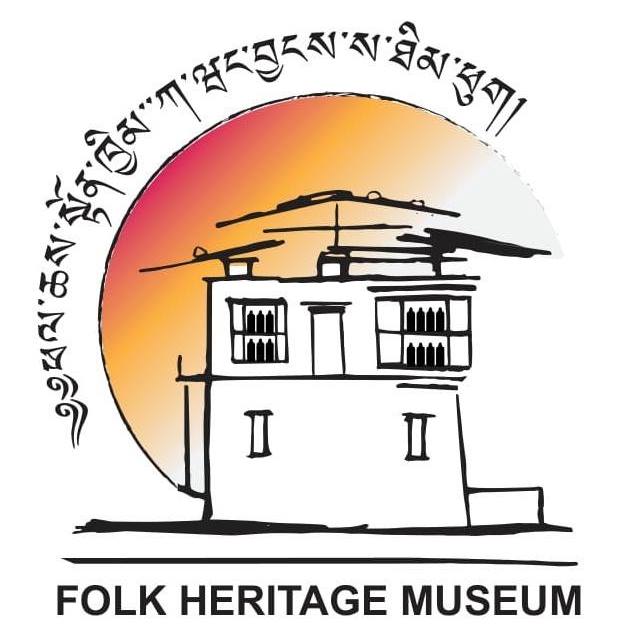The Folk Heritage Museum, also known as Phelchey Toenkhyim, was established on July 28th, 2001, through the initiative of Her Majesty Ashi Dorji Wangmo Wangchuck, the Queen Mother of Bhutan. Dedicated to connecting people to Bhutan's rural past, the museum offers exhibits, demonstrations, educational programs, and documentation of rural life. Her Majesty is both the founder and patron of the museum.
Although the Folk Heritage Museum is a relatively new institution, the building itself is over 150 years old, making it a vital link to Bhutan's history. The museum's well-preserved rural setting includes paddy, wheat, and millet fields, a traditional water mill with millstones, and a kitchen garden with vegetables grown over the past century. Additionally, visitors can experience a traditional hot stone bath and see native trees and plants used in Bhutanese rural households, which are cultivated here to preserve indigenous knowledge and maintain a green space in the heart of Thimphu, the capital city.
Visitors enter the farmhouse through a small, partially covered stone courtyard used to store firewood, farming equipment, and grain. An incense burner for daily offerings to protective deities is also located here. The ground floor resembles a barn, as it houses farm animals during Bhutan’s harsh winters.
Steep, open-tread timber stairs lead to the next two levels of the farmhouse. Visitors are advised to take caution while moving between floors. The second level primarily serves as storage for grain and food. The third level is the heart of the home, featuring the family's living and dining area. This is the only level with heating, provided by a wood-fired stove in the kitchen. The living area adjoins the kitchen and is where the entire, often large, family would sleep.
A visit to the Folk Heritage Museum offers a unique experience, as the principal exhibit is the restored three-story traditional rammed mud and timber house, dating back to the mid-19th century. The house's form and design reflect a conventional household from the Wang area of that era, providing a vivid glimpse into Bhutan's rural heritage.
About Us
The Heritage

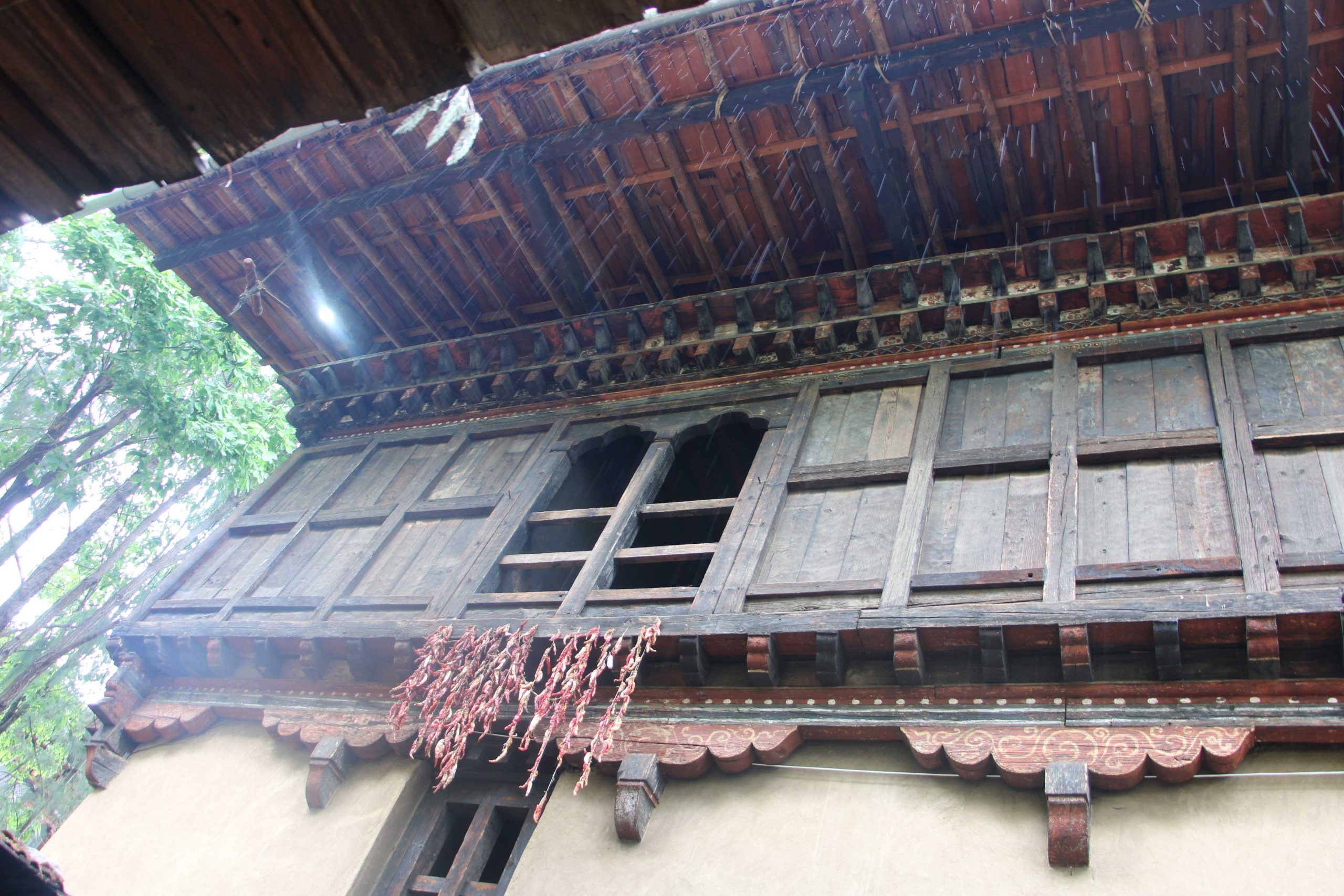

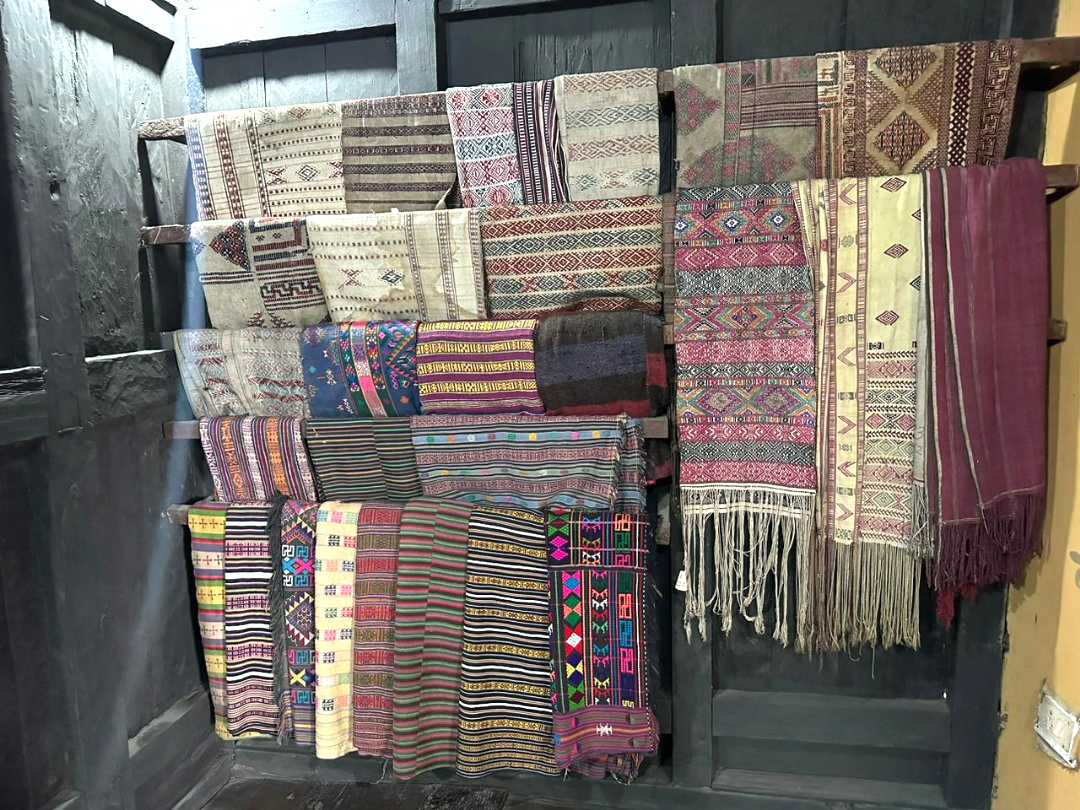
Our Vision & Mission

Inside the Manor


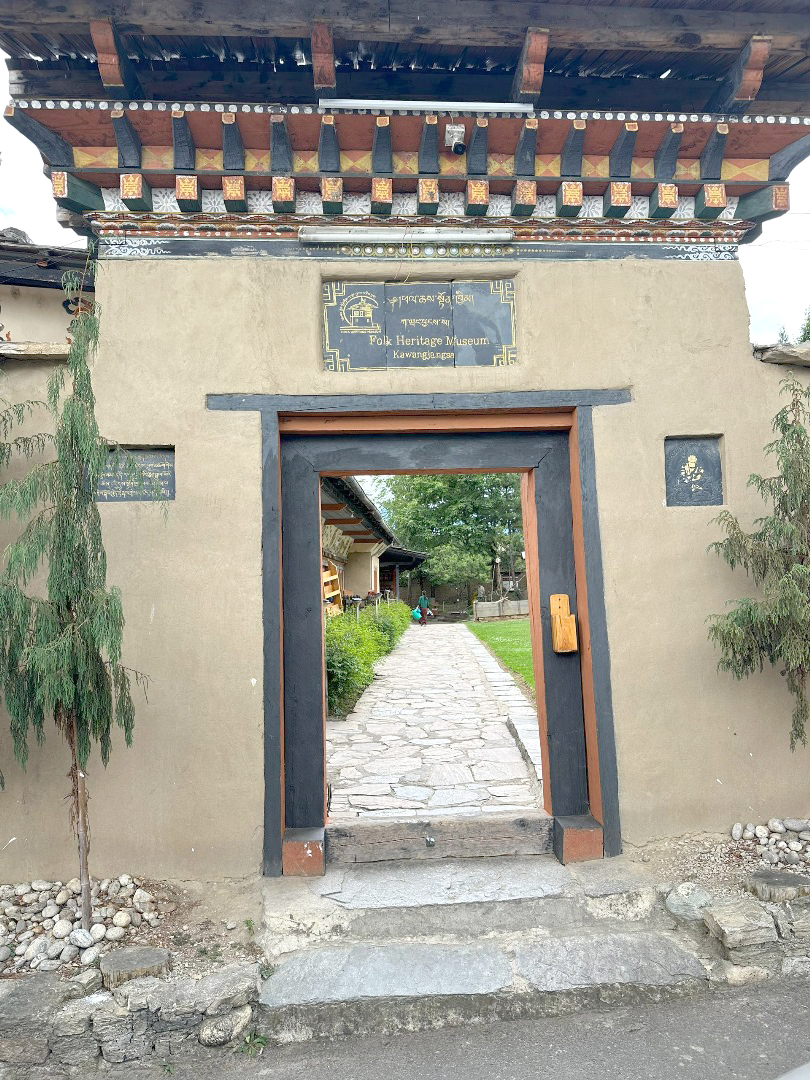
An Entrance with a Story

Showcasing the timeless skills and profound ingenuity of Bhutan's rural artisans from past centuries, the Folk Heritage Museum invites you to step into a realm where tradition and craftsmanship are revered and preserved. As you cross the threshold of this venerable institution, you are greeted by an array of artifacts, each whispering tales of a bygone era.
Upon entering, you will encounter a hearth where fragrant incense is burned daily, sending tendrils of smoke heavenward in homage to protective deities. Nearby, a water-propelled stone mill stands as a testament to the resourcefulness of our ancestors, tirelessly grinding grains with the gentle power of flowing water. Not far from this marvel, a water-driven prayer wheel turns endlessly, invoking blessings and fortitude, a beacon of spiritual devotion. Lastly, the Fortress of the Subterranean Beings—an enigmatic structure shrouded in mystery—offers a glimpse into the mystical and the sacred.
These artisans, driven by necessity, honed their skills and crafted tools that were passed down through generations, each new hand adding its own touch of innovation. Their ability to transform the natural resources available to them into instruments of labor and devotion is a magnificent testament to their ingenuity and resilience. The sheer brilliance with which they alleviated the burdens of daily toil through their creations is nothing short of awe-inspiring, echoing the harmonious relationship between human ingenuity and the natural world.
Upon entering, you will encounter a hearth where fragrant incense is burned daily, sending tendrils of smoke heavenward in homage to protective deities. Nearby, a water-propelled stone mill stands as a testament to the resourcefulness of our ancestors, tirelessly grinding grains with the gentle power of flowing water. Not far from this marvel, a water-driven prayer wheel turns endlessly, invoking blessings and fortitude, a beacon of spiritual devotion. Lastly, the Fortress of the Subterranean Beings—an enigmatic structure shrouded in mystery—offers a glimpse into the mystical and the sacred.
These artisans, driven by necessity, honed their skills and crafted tools that were passed down through generations, each new hand adding its own touch of innovation. Their ability to transform the natural resources available to them into instruments of labor and devotion is a magnificent testament to their ingenuity and resilience. The sheer brilliance with which they alleviated the burdens of daily toil through their creations is nothing short of awe-inspiring, echoing the harmonious relationship between human ingenuity and the natural world.
Ground Floor

The ground floor of this historic abode is a symphony of functionality and tradition, housing three distinct rooms that pulse with the rhythms of rural life. The front room, a veritable treasure trove, stores an array of equipment—leather bags, pouches, rugs, sacks, ropes, hats, saddles, stirrups, and myriad other odds and ends—all essentials for the animals, particularly the beasts of burden. This room is a silent witness to the symbiotic relationship between humans and animals, each item echoing tales of journeys and labor shared across the ages.
The main room inside, a sanctuary of care, is reserved for pregnant cows, milking cows, and animals needing special attention. Sometimes, it even becomes a haven for pigs and piglets. This room is more than a shelter; it is a nurturing cradle where life is tended with love and diligence. The production of organic manure is a vital part of the farming cycle, and the farmyard manure produced here sustains the fertility of the fields. Large quantities of leaves collected from the forests, paddy straw, and agricultural biomass are meticulously layered as bedding for the animals. Together with the waste from these domestic creatures, the leaves decompose, forming the perfect organic manure, a life-giving elixir for the paddy fields, spread generously in early spring before the rice is planted.
Adjacent to this room is a dedicated space for calves, known affectionately as Buchung-go ray. Here, the youngest members of the animal family are nurtured, their innocent eyes taking in the warmth and security of the home, a symbol of continuity and the promise of future harvests.
The main room inside, a sanctuary of care, is reserved for pregnant cows, milking cows, and animals needing special attention. Sometimes, it even becomes a haven for pigs and piglets. This room is more than a shelter; it is a nurturing cradle where life is tended with love and diligence. The production of organic manure is a vital part of the farming cycle, and the farmyard manure produced here sustains the fertility of the fields. Large quantities of leaves collected from the forests, paddy straw, and agricultural biomass are meticulously layered as bedding for the animals. Together with the waste from these domestic creatures, the leaves decompose, forming the perfect organic manure, a life-giving elixir for the paddy fields, spread generously in early spring before the rice is planted.
Adjacent to this room is a dedicated space for calves, known affectionately as Buchung-go ray. Here, the youngest members of the animal family are nurtured, their innocent eyes taking in the warmth and security of the home, a symbol of continuity and the promise of future harvests.
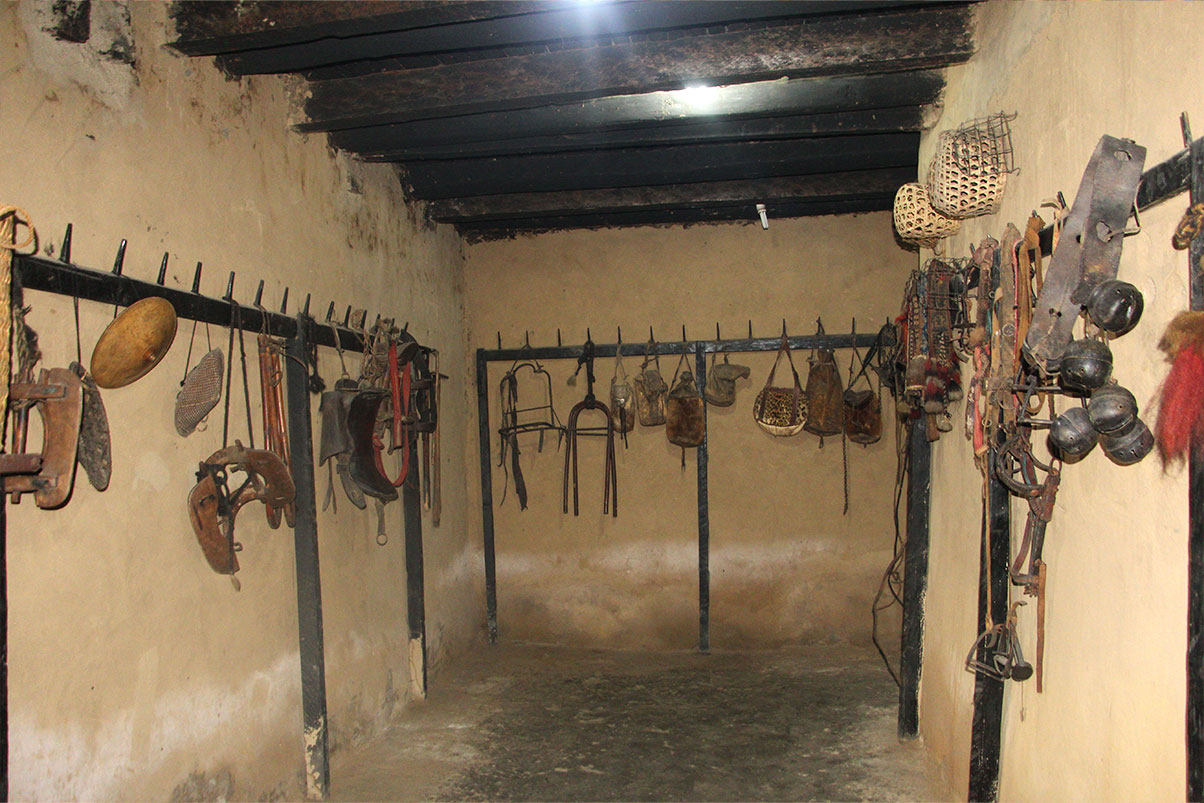
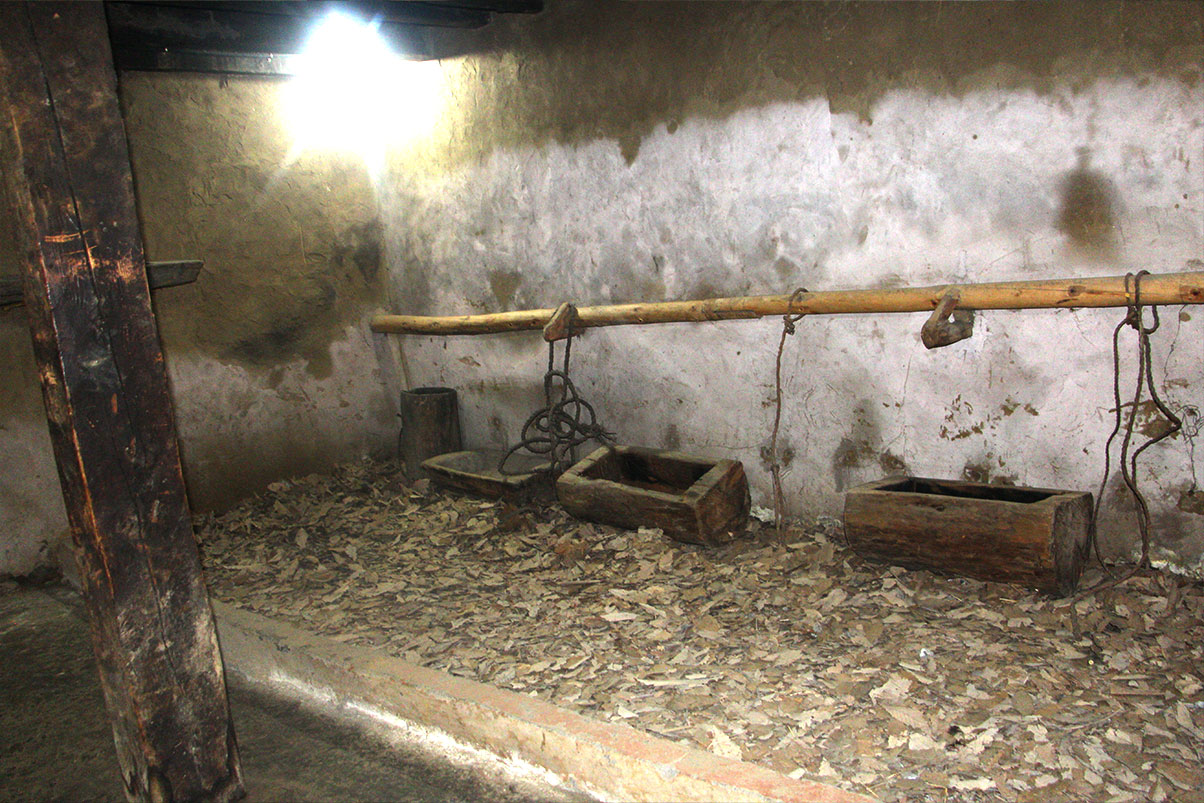
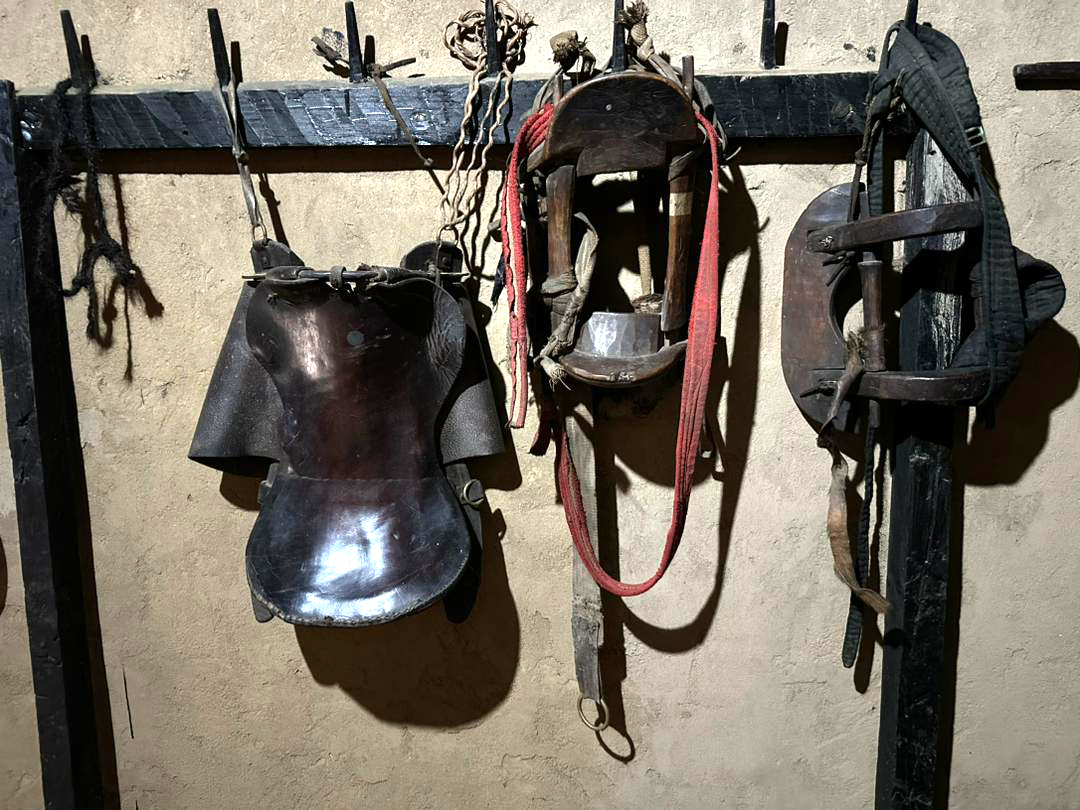
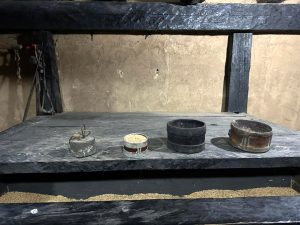
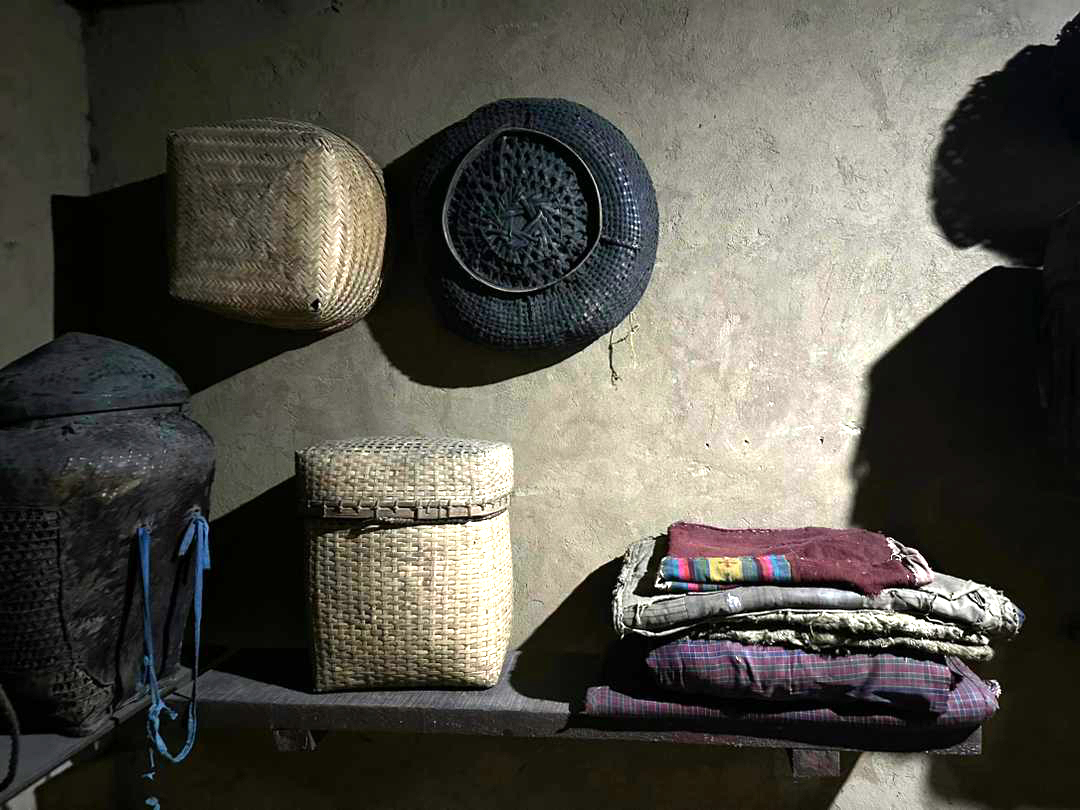
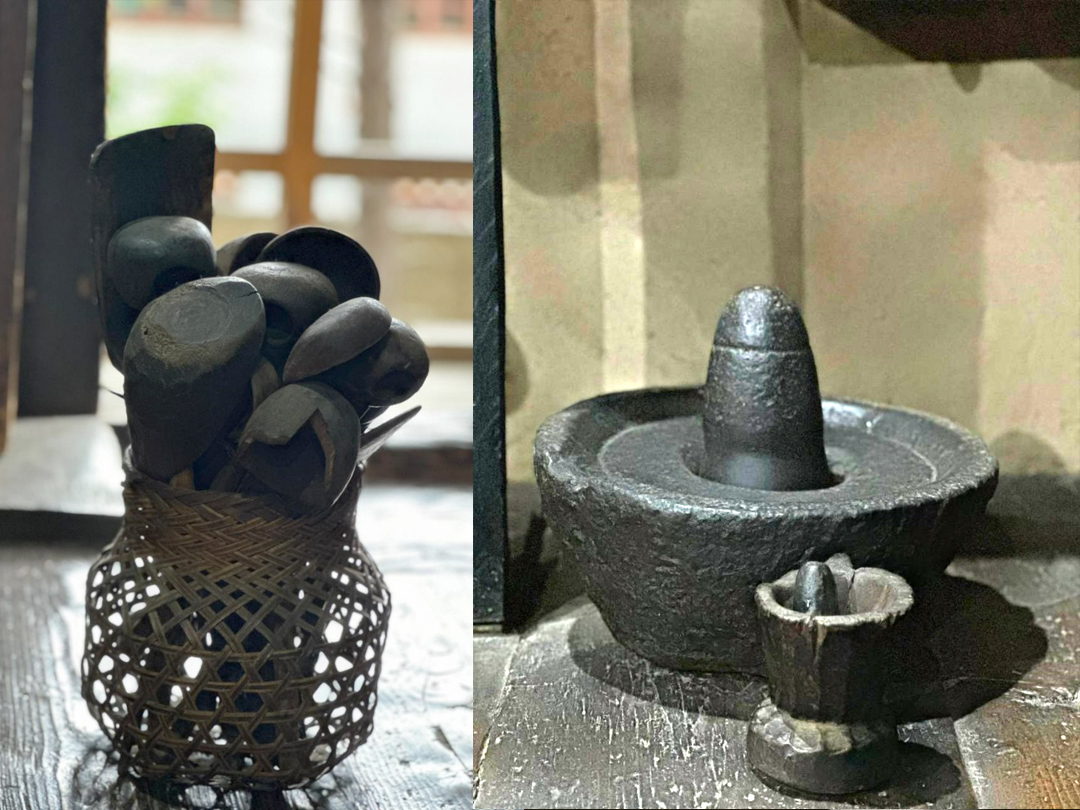

Middle Floor

Ascend to the middle floor, or Barthog, and you find yourself in a realm of quiet utility and rustic charm. This floor, with its two rooms, serves as the heart of household storage, a place where agricultural products and household items find their resting place. Here, wooden boxes and baskets coexist with wine and spirit containers crafted from bamboo and buffalo horns. Butter and cheese containers, mortars and pestles for crushing chili and other spices, carpentry tools, traditional stitching equipment, and even implements for traditional sports lie in gentle repose, each item a silent witness to the rhythms of daily life.
The room at the back is a sacred vault for grain, particularly the cherished red rice. Preserving this vital staple is an art in itself, with rice stored either in large wooden containers called bham or in huge baskets known as luep. The rice, cradled in its husk, is protected from rice weevils, ensuring that it remains fresh and viable for months. This room is also a custodian of Bhutanese scientific measuring systems, with phita and dre, alongside the three standard weighing scales: sang, goe, and tirusangchung. These tools, steeped in tradition, are a testament to the meticulous care with which Bhutanese farmers have measured and managed their harvests for generations.
The roofs of these homes, crafted from pine shingles, slope gently and are ingeniously designed to withstand Bhutan's fierce winter winds. Stones, strategically placed at regular intervals on laths across the loose shingles, secure them firmly. This simple yet effective technique ensures that the roofs remain intact even during the most severe windstorms. Every aspect of this house, from its sturdy construction to the thoughtful integration of natural materials, tells a story of harmony with nature and a deep understanding of sustainable living.
The Folk Heritage Museum not only preserves these architectural marvels but also offers a profound insight into the wisdom and craftsmanship of Bhutan’s rural past. As you wander through its storied halls and courtyards, you are transported back in time, gaining a deeper appreciation for the skill, resilience, and ingenuity that define Bhutanese heritage. The museum is not just a showcase of artifacts; it is a living narrative of a way of life that is deeply intertwined with the natural world, a romance between humanity and the environment that continues to inspire and enchant
The room at the back is a sacred vault for grain, particularly the cherished red rice. Preserving this vital staple is an art in itself, with rice stored either in large wooden containers called bham or in huge baskets known as luep. The rice, cradled in its husk, is protected from rice weevils, ensuring that it remains fresh and viable for months. This room is also a custodian of Bhutanese scientific measuring systems, with phita and dre, alongside the three standard weighing scales: sang, goe, and tirusangchung. These tools, steeped in tradition, are a testament to the meticulous care with which Bhutanese farmers have measured and managed their harvests for generations.
The roofs of these homes, crafted from pine shingles, slope gently and are ingeniously designed to withstand Bhutan's fierce winter winds. Stones, strategically placed at regular intervals on laths across the loose shingles, secure them firmly. This simple yet effective technique ensures that the roofs remain intact even during the most severe windstorms. Every aspect of this house, from its sturdy construction to the thoughtful integration of natural materials, tells a story of harmony with nature and a deep understanding of sustainable living.
The Folk Heritage Museum not only preserves these architectural marvels but also offers a profound insight into the wisdom and craftsmanship of Bhutan’s rural past. As you wander through its storied halls and courtyards, you are transported back in time, gaining a deeper appreciation for the skill, resilience, and ingenuity that define Bhutanese heritage. The museum is not just a showcase of artifacts; it is a living narrative of a way of life that is deeply intertwined with the natural world, a romance between humanity and the environment that continues to inspire and enchant
Top Floor

In the serene embrace of the top floor, there are three main rooms, a harmonious trinity of spaces: one room at the back and two at the front. The room at the back, a sanctuary of familial warmth, is the heart of the household, the thabtshang (kitchen). Here, life pulsates with the rhythm of daily chores and cherished traditions. Copper spoons and ladles glint softly in the light, a spinning wheel hums with the promise of creation, and baskets alongside ladles speak of hands skilled in nurturing. A bamboo-wrapped gourd salt container, a stone grinder, and wooden vessels hold the essence of sustenance, while a spice mortar and a wooden buckwheat noodle machine, leveraging ancient wisdom, transform humble ingredients into meals that nourish both body and soul.
The two rooms at the front are realms of living and spirituality. The Baryap (living area) welcomes you with open arms into a haven of light and comfort. The walls, adorned with Bhutanese motifs, narrate tales of tradition and culture. Small carpets invite guests to sit and share in the warmth of hospitality. Decorated boxes and cabinets, standing proud, display swords, sword belts, scarves, and clothing, each piece telling its own story. Containers of various forms, musical instruments, and leather-covered cane boxes add to the rich tapestry of the room, where every object complements the others, creating a symphony of elegance and heritage.
Every Bhutanese home treasures an altar room, the Choesham, the spiritual heart of the household. This room, the most ornately adorned, holds a sacred space where reverence and tranquility reign supreme. Here, daily offerings of water and butter lamps are made, cultivating generosity and dispelling ignorance. The altar room houses sacred objects: the Drum (Nga) and the oboe-like Gyaling, Cymbals (Gsilsnyen), the Thunderbolt and Bell (Dorji & Dribu), and the Conch Shell (Dungkar). Wooden and brass storage boxes guard precious relics, while war weapons and the Bhutanese lute speak of protection and culture. Wooden printing blocks and religious paintings on the walls echo prayers and blessings, enveloping the room in an aura of sanctity and devotion.
The two rooms at the front are realms of living and spirituality. The Baryap (living area) welcomes you with open arms into a haven of light and comfort. The walls, adorned with Bhutanese motifs, narrate tales of tradition and culture. Small carpets invite guests to sit and share in the warmth of hospitality. Decorated boxes and cabinets, standing proud, display swords, sword belts, scarves, and clothing, each piece telling its own story. Containers of various forms, musical instruments, and leather-covered cane boxes add to the rich tapestry of the room, where every object complements the others, creating a symphony of elegance and heritage.
Every Bhutanese home treasures an altar room, the Choesham, the spiritual heart of the household. This room, the most ornately adorned, holds a sacred space where reverence and tranquility reign supreme. Here, daily offerings of water and butter lamps are made, cultivating generosity and dispelling ignorance. The altar room houses sacred objects: the Drum (Nga) and the oboe-like Gyaling, Cymbals (Gsilsnyen), the Thunderbolt and Bell (Dorji & Dribu), and the Conch Shell (Dungkar). Wooden and brass storage boxes guard precious relics, while war weapons and the Bhutanese lute speak of protection and culture. Wooden printing blocks and religious paintings on the walls echo prayers and blessings, enveloping the room in an aura of sanctity and devotion.
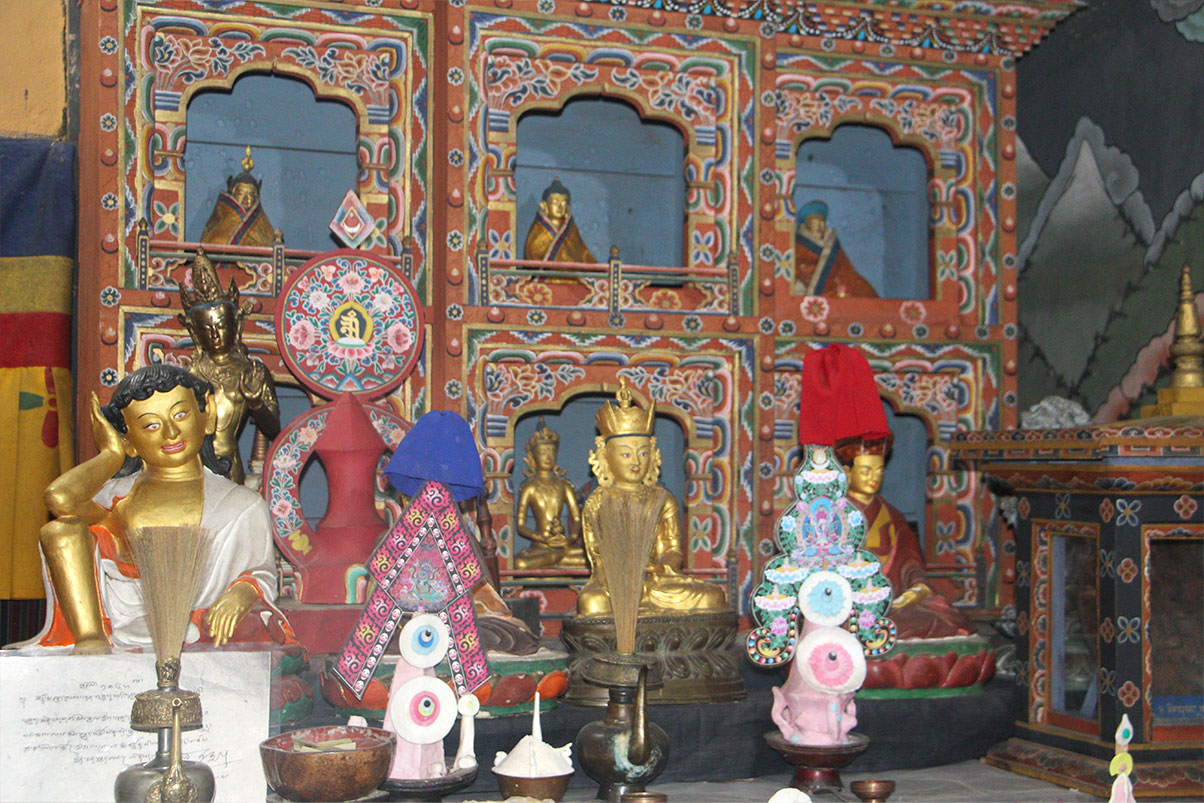
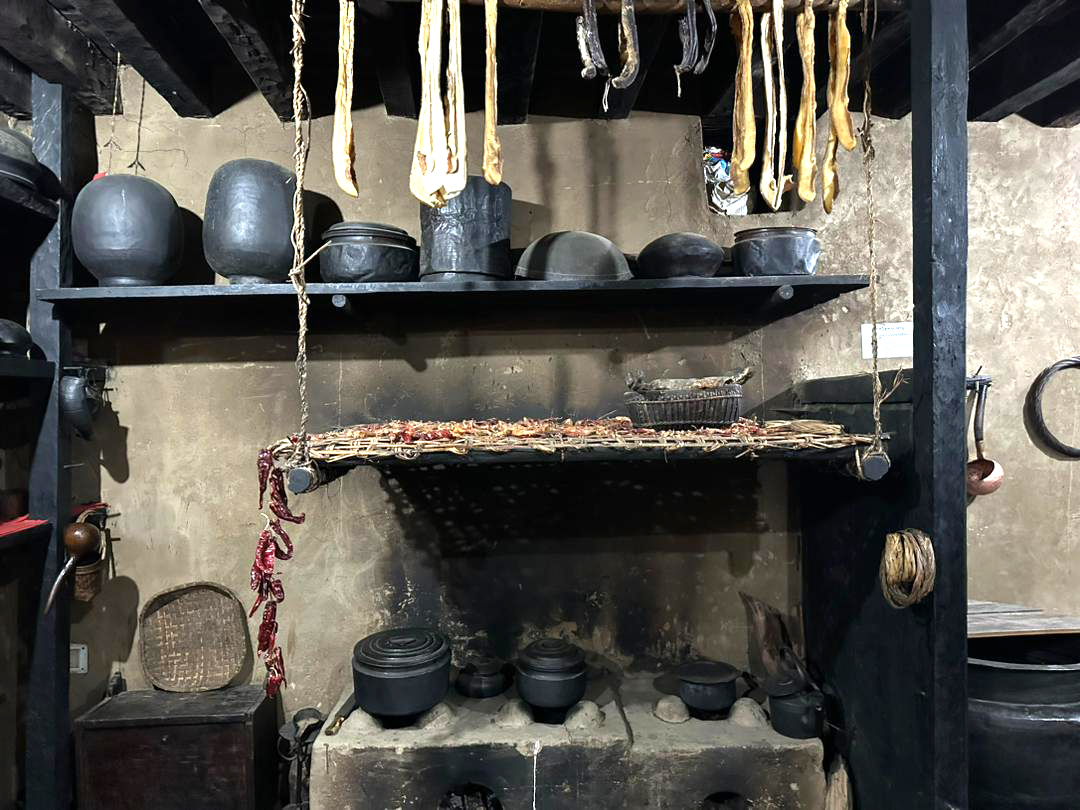
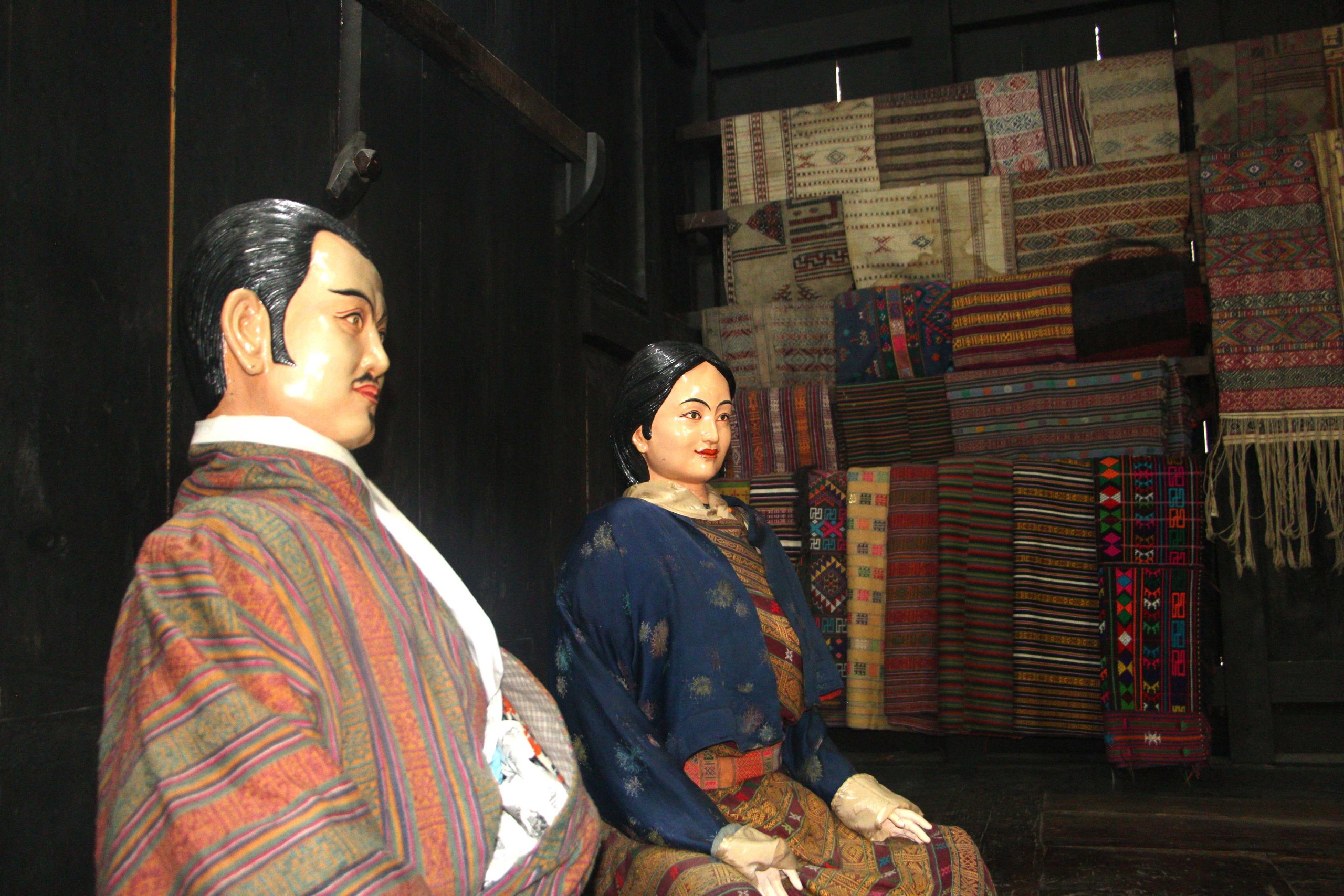

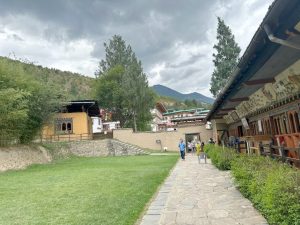
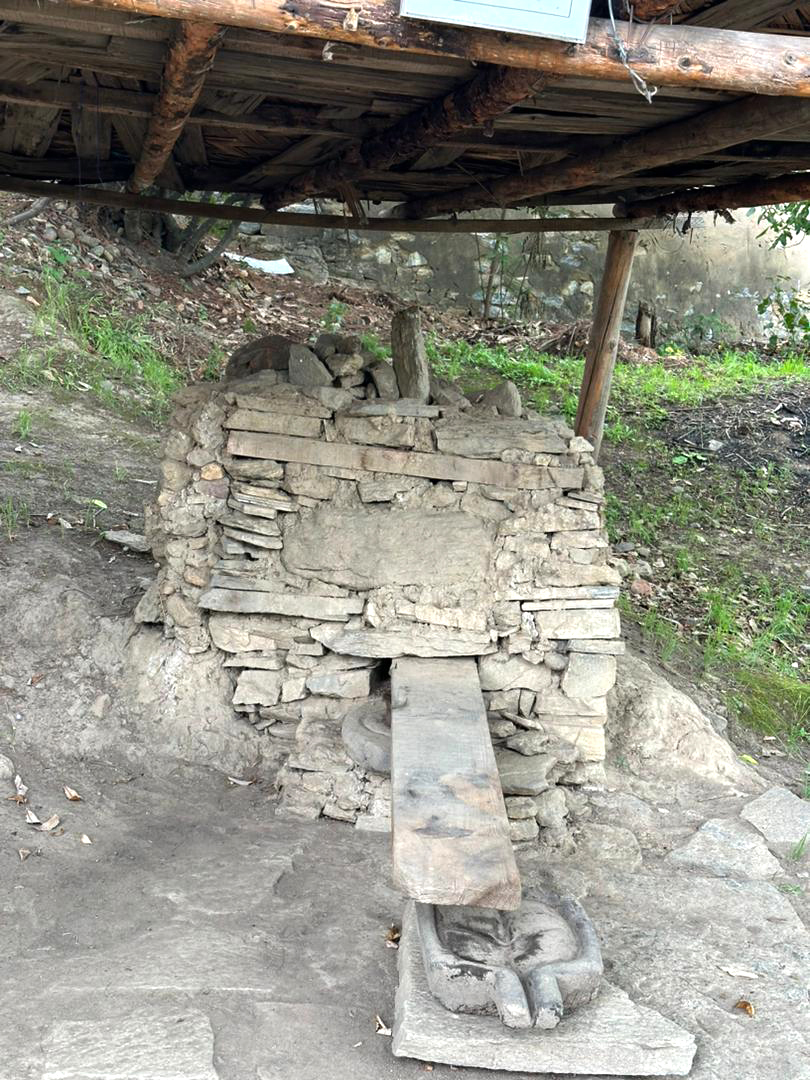
Exit - The Way Out

In the captivating realm where tradition dances with modernity, two pathways unfurl, leading the wanderer on a journey of discovery. As you traverse the first exit, a tantalizing aroma beckons from the Folk Heritage Restaurant, weaving tales of culinary prowess and cultural richness. Here, amidst the splendor of Bhutanese hospitality, an artisanal marvel awaits—a handmade machine, crafted with care, to extract the golden elixir of mustard oil.
Mustard oil, the lifeblood of Bhutanese cuisine, undergoes a transformation steeped in tradition and love. Roasted mustard seeds, imbued with warmth and flavor, are tenderly pounded and steamed, their essence ready to be unlocked. Within the embrace of a sturdy basket, nestled upon a circular wooden grove, the seeds yield to the gentle pressure of a wooden lever, surrendering their liquid gold. The oil, a testament to centuries of culinary artistry, trickles into an earthen vessel, its amber hue a symphony of flavors waiting to unfold.
Venturing forth through the second exit, the Folk Heritage Museum shop invites you into a treasure trove of Bhutanese craftsmanship and cultural heritage. Here, amidst shelves adorned with tales untold, one discovers a myriad of delights—a tapestry woven from the threads of tradition. Books whisper ancient wisdom, postcards capture fleeting moments of beauty, and masks evoke the mystique of centuries past. Traditional Bhutanese clothing, woven baskets, and carved wooden bowls exude the essence of a bygone era, each item a masterpiece in its own right.
Many of these treasures are replicas of artifacts cherished within the Museum’s hallowed halls, offering a glimpse into the soul of Bhutanese culture. Available exclusively within these walls, they serve as tokens of remembrance, souvenirs of a journey through time and tradition. And amidst it all, the copies of the Folk Heritage Museum book stand as guardians of history, preserving the legacy of a nation for generations yet to come.
Mustard oil, the lifeblood of Bhutanese cuisine, undergoes a transformation steeped in tradition and love. Roasted mustard seeds, imbued with warmth and flavor, are tenderly pounded and steamed, their essence ready to be unlocked. Within the embrace of a sturdy basket, nestled upon a circular wooden grove, the seeds yield to the gentle pressure of a wooden lever, surrendering their liquid gold. The oil, a testament to centuries of culinary artistry, trickles into an earthen vessel, its amber hue a symphony of flavors waiting to unfold.
Venturing forth through the second exit, the Folk Heritage Museum shop invites you into a treasure trove of Bhutanese craftsmanship and cultural heritage. Here, amidst shelves adorned with tales untold, one discovers a myriad of delights—a tapestry woven from the threads of tradition. Books whisper ancient wisdom, postcards capture fleeting moments of beauty, and masks evoke the mystique of centuries past. Traditional Bhutanese clothing, woven baskets, and carved wooden bowls exude the essence of a bygone era, each item a masterpiece in its own right.
Many of these treasures are replicas of artifacts cherished within the Museum’s hallowed halls, offering a glimpse into the soul of Bhutanese culture. Available exclusively within these walls, they serve as tokens of remembrance, souvenirs of a journey through time and tradition. And amidst it all, the copies of the Folk Heritage Museum book stand as guardians of history, preserving the legacy of a nation for generations yet to come.
Bhutan Echoes
Bhutan Echoes is a literature and arts initiative, an annual international literary festival held in Bhutan.
Her Majesty the Queen Mother of Bhutan, Gyalyum Ashi Dorji Wangmo Wangchuck is the Chief Patron of Bhutan Echoes: Drukyul’s Literature Festival.
Her Majesty the Queen Mother of Bhutan, Gyalyum Ashi Dorji Wangmo Wangchuck is the Chief Patron of Bhutan Echoes: Drukyul’s Literature Festival.
Why Folk Heritage?
Explore through these videos
Find us on Facebook
Contact
+975 02 327133
Post Box: 2003
Copyright ©
2024
Folk Heritage Museum. All rights reserved.
Web Designed & Developed by Druk Digital Services
